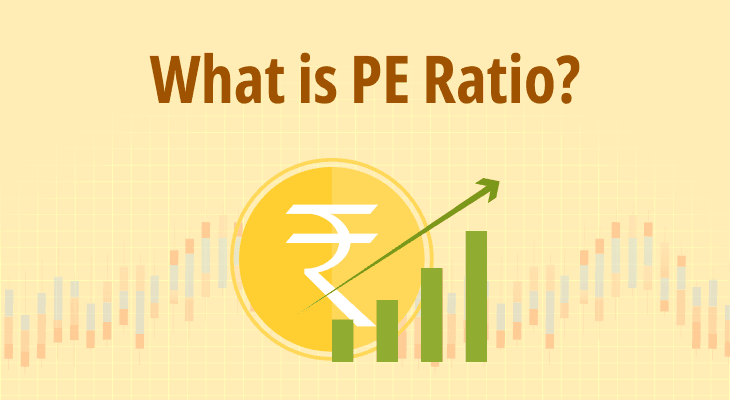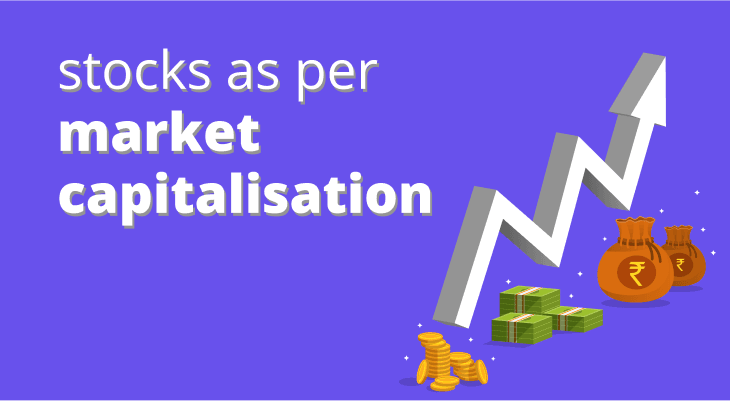
What is PE Ratio?
If you’re exploring the world of investing, the term "P/E ratio" will likely come up often. The price-to-earnings ratio, also known as the P/E ratio, is one of the most widely used metrics in the stock market. It serves as a key indicator of whether a stock is valued appropriately. But what exactly does the P/E ratio mean? In this blog, we'll dive deep into the concept of the P/E ratio, explaining what it is, how it’s calculated, the different types available, and its significance in value investing. Here, you'll also learn what a good P/E ratio is and the limitations of relying solely on this metric for your investment decisions.
What Is P/E Ratio?
To start with the basics, what is the P/E ratio? The price-to-earnings ratio is a tool used to measure the relative value of a company's stock. Essentially, it shows a company’s current share price to its earnings per share (EPS). This comparison gives you an idea of how much investors are willing to pay today for a stock based on its past or future earnings. In simpler terms, the P/E ratio tells you how many years it would take for the company to earn back its price if its earnings stayed constant.
For instance, if a company has a P/E ratio of 15, it means that investors are willing to pay 15 times the company's earnings for one share. This metric can help you decide whether a stock is overvalued, undervalued, or fairly valued in comparison to its earnings. The P/E ratio meaning becomes even clearer when you consider it in the context of the broader market and the industry in which the company operates.
What is the P/E Ratio Formula?
The formula for the P/E ratio is quite straightforward:
P/E Ratio = Market Price per Share / Earnings per Share (EPS)
Where;
- Price per Share is the current market price of a single share of the company’s stock.
- Earnings per Share (EPS) is the portion of a company’s profit allocated to each outstanding share. It’s derived by dividing the company’s total revenue by the number of shares outstanding.
This calculation is vital for assessing how much investors are willing to pay per rupee of earnings. For instance, a P/E ratio of 20 means investors are willing to pay ₹ 20 for every ₹ 1 of earnings.
Types of Price to Earnings Ratio
There are different types of P/E ratios that you can use depending on the context and your investment strategy. The most common types are:
- Trailing P/E Ratio: This is based on the company’s earnings over the past 12 months. It provides a historical view of the company’s performance. The trailing P/E ratio is often used because it relies on actual, rather than projected, earnings.
- Forward P/E Ratio: This uses projected earnings for the upcoming 12 months. It offers a glimpse into the future, reflecting what investors expect the company to earn. However, forward P/E ratios can be less reliable because they depend on earnings forecasts, which are not always accurate.
- Normalised P/E Ratio: This adjusts for cyclical fluctuations in earnings. It smoothens out earnings over a period of time, giving a more stable view of the P/E ratio by eliminating the effects of one-time events or economic cycles.
Each type of P/E ratio offers different insights. For instance, if a company's trailing P/E ratio is significantly higher than its forward P/E ratio, it might indicate that the market expects its earnings to grow rapidly in the future. On the other hand, if the forward P/E ratio is higher, it could suggest that the stock is overvalued based on optimistic earnings forecasts.
P/E Ratio in Value Investing
The P/E ratio plays a crucial role in value investing, where the goal is to find undervalued stocks that have strong potential for long-term growth. Value investors typically look for stocks with a low P/E ratio, as this may indicate that the stock is undervalued relative to its earnings.
A low P/E ratio might suggest that the market has overlooked the stock, providing an opportunity to buy it at a lower price before its value increases. Conversely, a high P/E ratio could mean that the stock is overvalued, which may lead to lower returns if the stock price corrects itself in the future.
However, it's important not to rely solely on the P/E ratio when making investment decisions. While the P/E ratio is a useful tool, it should be considered alongside other financial metrics and factors such as the company's growth prospects, industry trends, and overall economic conditions.
Distinguishing Absolute and Relative P/E Ratios
When analysing the P/E ratio, it’s important to distinguish between the absolute P/E ratio and the relative P/E ratio.
- Absolute P/E Ratio: This is the P/E ratio of a single company, calculated using its current share price and earnings. The absolute P/E ratio provides a snapshot of how the market values a company at a given point in time.
- Relative P/E Ratio: This compares a company’s P/E ratio to the P/E ratios of other companies in the same industry or to the overall market. The relative P/E ratio helps investors understand whether a stock is valued higher or lower than its peers or the broader market.
For example, if a company's absolute P/E ratio is 15 and the industry average is 20, the company might be undervalued relative to its peers. However, if the industry is experiencing a downturn, a lower P/E ratio might be justified.
Both the absolute and relative P/E ratios are valuable in assessing a stock's valuation. While the absolute P/E ratio gives you a direct measure of a stock’s value, the relative P/E ratio provides context by comparing it to other stocks in the same sector.
Identifying a Good P/E Ratio
One of the most common questions investors ask is, “What is a good P/E ratio?” The answer isn’t straightforward, as a good P/E ratio varies depending on the industry, market conditions, and the company’s growth prospects.
In general, a lower P/E ratio might be considered good because it suggests that the stock is undervalued. However, this isn’t always the case. For example, a company with high growth potential may have a high P/E ratio because investors expect its earnings to increase significantly in the future.
On the other hand, a low P/E ratio might indicate that the company is facing difficulties or that the market expects its earnings to decline. Therefore, it's important to consider other factors, such as the company’s growth rate, industry averages, and overall economic conditions when determining what constitutes a good P/E ratio.
Limitations of the P/E Ratio
The P/E ratio formula is a simple yet powerful tool that provides a quick snapshot of a stock’s value relative to its earnings. However, it's important to remember that the P/E ratio is just one piece of the puzzle when evaluating a stock. Here are a few limitations of the P/E ratio that you should keep in mind:
- Growth Potential: The P/E ratio doesn’t account for future earnings growth. A company with high growth potential might have a high P/E ratio, but that doesn’t necessarily mean it’s overvalued.
- Debt Levels: The P/E ratio doesn’t factor in a company’s debt, which can significantly affect its financial health. A company with high debt might have a low P/E ratio, but that doesn’t make it a good investment.
- One-Time Events: The P/E ratio can be skewed by one-time events, such as asset sales or restructuring charges, that affect a company’s earnings. These events might not reflect the company’s ongoing performance, leading to a misleading P/E ratio.
- Industry Differences: P/E ratios vary widely across industries. A high P/E ratio in one industry might be considered normal in another, making it important to compare companies within the same industry.
Conclusion
In conclusion, the price-to-earnings ratio is a critical metric for evaluating the value of a stock. By understanding what the P/E ratio is, how to calculate it, and the different types available, you can make more informed investment decisions. Remember, though, that while the P/E ratio is a useful tool, it should not be the sole factor in your investment strategy. Consider other financial metrics, the company’s growth prospects, and the broader economic environment when assessing the value of a stock. By doing so, you can make more informed decisions and better navigate the complexities of the stock market.
FAQ
Is a low P/E ratio good?
A low P/E ratio can indicate that a stock is undervalued, potentially making it a good buying opportunity. However, it's essential to consider the context, including the company’s growth prospects and industry trends, before making investment decisions.
Is a negative P/E ratio good?
A negative P/E ratio typically indicates that a company is experiencing financial losses. This is generally not considered a good sign, as it suggests the company may be struggling. However, some investors may see potential if they believe the company can turn its performance around.
Is a 0 P/E ratio good?
A P/E ratio of 0 suggests that the company has no earnings or its earnings are negligible. This is usually not a good sign, as it indicates that the company is not currently profitable. Investors should be cautious and investigate the reasons behind the zero earnings.
What does the P/E ratio tell you?
The P/E ratio compares the current share price to the earnings per share (EPS) and helps investors determine whether a stock is overvalued, undervalued, or fairly valued relative to its earnings.
How do you calculate the P/E ratio?
The P/E ratio is calculated using the formula: P/E Ratio = Price per Share / Earnings per Share (EPS).
What is considered a good P/E ratio?
A good P/E ratio varies depending on the industry, market conditions, and the company’s growth prospects. Generally, a lower P/E ratio might indicate a good buying opportunity, but it's essential to consider other factors such as the company's growth potential and overall market trends.
What is the difference between trailing P/E and forward P/E?
The trailing P/E ratio is based on a company’s past earnings over the previous 12 months, while the forward P/E ratio uses projected earnings for the next 12 months.
Can the P/E ratio be used to compare companies in different industries?
Different industries have varying average P/E ratios, so a high or low P/E might not have the same implications across sectors.
What are the limitations of using the P/E ratio?
The P/E ratio doesn’t account for future growth, ignores company debt levels, can be affected by one-time events, and varies significantly across industries. It should be used alongside other financial metrics and analyses.
How does the P/E ratio relate to value investing?
Value investors use the P/E ratio to identify undervalued stocks that may offer strong potential for growth. A lower P/E ratio might indicate an undervalued stock, making it an attractive option for value investors looking for long-term gains.


